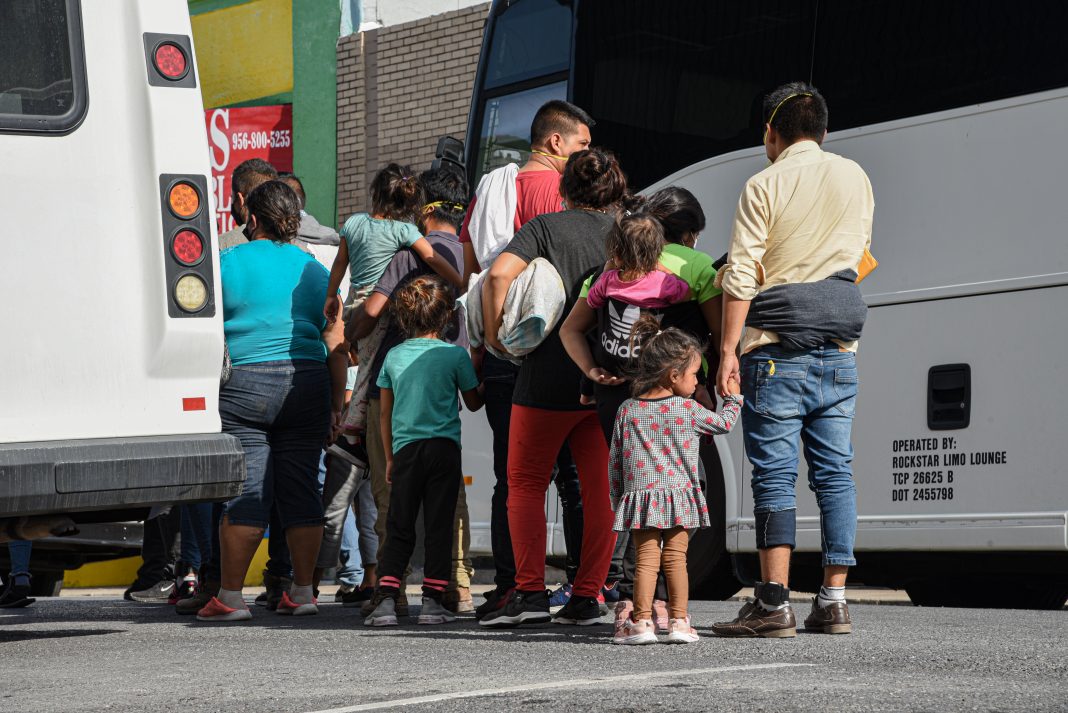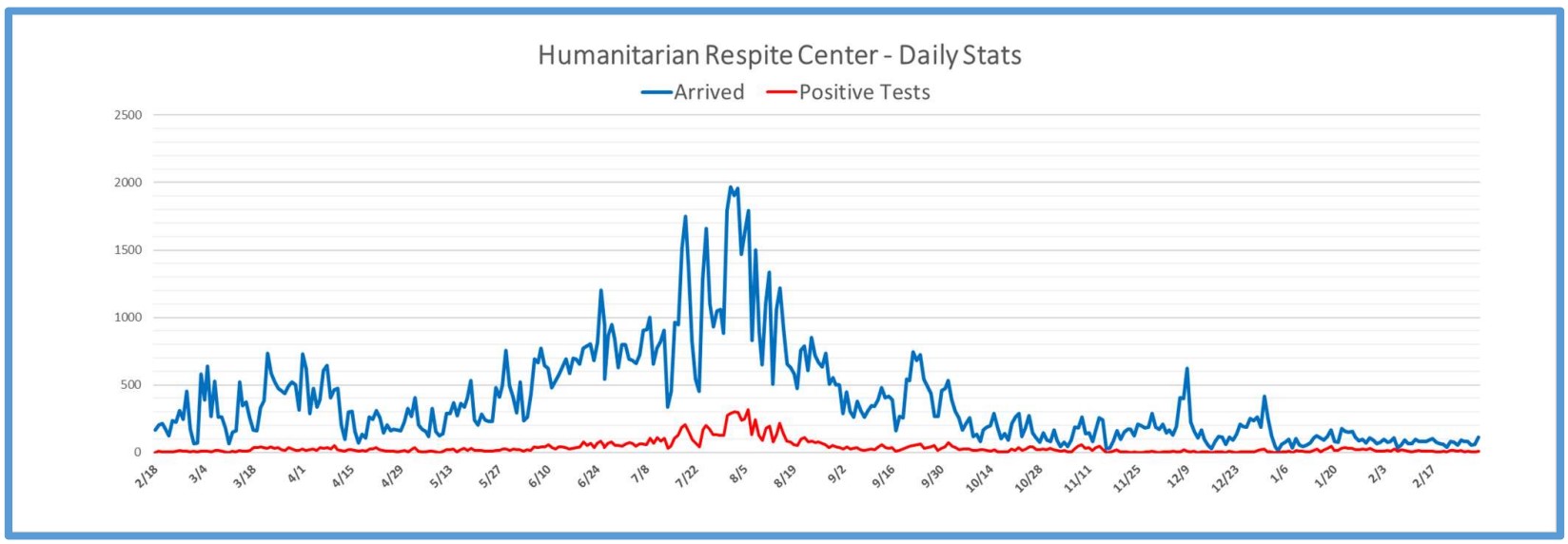As the Biden administration prepares to remove the use of a public health policy barring migrants from requesting asylum, state and local leaders grow concerned over the financial and public safety implications when the changes are made next month.
On Friday, the Centers for Disease Control and Prevention announced they will be terminating the use of the public health policy known as Title 42, effective May 23. The policy was used about 1.5 million times to turn back migrants at the border, though many ended up staying in Mexico waiting for its reversal.
DHS officials explained the changes to immigration processing will be a return to the “status quo,” or the normal, statutory process established for the department before the pandemic, during a media call Friday afternoon.
Federal, state and local officials, however, are concerned about a buildup of migrants waiting to enter initially.
“I fear, though, that we’re about to experience an immigration surge like we’ve never experienced before,” Javier Villalobos, McAllen mayor, said in a social media video posted Thursday.
After immigration officials determine if migrants will be detained or released into the United States while they wait for the immigration hearings, they are released into cities near the border, like McAllen and Brownsville.
Non-governmental organizations, like Catholic Charities of the Rio Grande Valley or Team Brownsville, create a pipeline of humanitarian assistance to provide migrant families and adults with shelter and guidance through commercial transportation systems.
Over the summer, too many people were released at a time, prompting the Valley’s largest migrant shelter to reach maximum capacity and close its doors.
“If it exceeds the flow we had last year, God bless us all. God help us all. I don’t know what’s going to happen,” Villalobos said candidly Friday.
Villalobos remembers the nearly 2,000 people released in the McAllen area on a single day, during the peak last year.
The day after the largest shelter reached capacity, commissioners for the city of McAllen decided to open an additional site which was eventually moved to the Anzalduas park. Though it remains operational, the city was looking at the dwindling figures of released migrants and considering alternatives.
“We were about to start ramping down Anzalduas, but we’re not anymore. We’ve got to have it ready. I know it’s almost two months before they lift it but we have to be ready,” Villalobos said.
For months, city officials planned for contingencies.
Commissioners were briefed in a recent meeting.
“Discussions with local, state, federal, and private entities continue in relation to factors which may cause increased drop-offs, and which could prompt the need for potential alternate sites to be used to house individuals awaiting northbound transportation, as well as on the potential for federal agencies to move some of these individuals to locations other than McAllen,” stated the city of McAllen’s OEM Emergency Management Report, which is dated March 4.
During the summer, Catholic Charities mobilized churches and other non-governmental organizations throughout the region to take in migrants when their shelter reached capacity.
Although the CCRGV director was not available for comment Friday, the previous efforts included a church in Mission and Cameron County shelters, like Ozanam, which confirmed preparations for May.
“It’s going to hit us in Brownsville, too,” Myrna M. Garza, Ozanam’s shelter manager, said Friday.
An alert of the expected increase in migrant releases was shared with shelter management. Currently, they’ve been receiving 30 to 40 people a night, but Garza said they have the capacity to expand their shelter up to about 250 people.
They’ve been experiencing an increase in released migrant men since December, and are in critical need of supplies including men’s tennis shoes, pants and clothes. Donations can be dropped off at their office located at 656 N. Minnesota Ave. in Brownsville.
Thousands are waiting on the Mexican side of the border to enter and request asylum, and DHS is planning for varying numbers.
“The DHS Office of Immigration Statistics produced projections for post-Title 42 Southwest Border encounters describing low, medium, high, or very high encounter scenarios,” the Southwest Border Strategic Concept of Operations plan stated. “These scenarios underpin planning assumptions that generate requirements which in turn drive operational execution. Based on these projections the SBCC is currently planning for 6,000, 12,000 (high) and 18,000 (very high) encounters per day.”
Hundreds of law enforcement officers were already surged to the border over the last couple of months for border processing, and they are prepared to surge more officers, agents, and DHS volunteer force personnel if needed, DHS officials said Friday.
“We are mobilizing resources to add to our capacity on the border, and that includes standing up additional soft-sided facilities and central processing centers to more efficiently process migrants at the southwest border and put them into removal proceedings,” a DHS official added.
Federal efforts to process migrants are still in flux, but DHS and State Department officials acknowledged it will take coordination with state and local governments to meet challenges of the upcoming changes.
FEMA officials are working with local governments to communicate developments. On Friday, Villalobos said he’d received a call from White House officials providing updates. His main concerns focus on financial responsibility and public safety, he said.
Villalobos implored citizens of McAllen to reach out to the president, members of Congress and the Senate in Thursday’s video.
“Ask them to act not on behalf of a political party, but on behalf of our American people. Here in the city of McAllen, we take no position as to whether the immigrants are authorized or not to enter our country. We also take no position as to whether they are eligible for asylum,” Villalobos said. “Our position is that we must stand for public safety. McAllen stands ready to act and protect.”





